genetics and evolution topic
1/68
There's no tags or description
Looks like no tags are added yet.
Name | Mastery | Learn | Test | Matching | Spaced |
|---|
No study sessions yet.
69 Terms
DNA
A complex molecule containing the genetic information that makes up the chromosomes.
gene
is the instructions for a particular trait such as a height or hair colour
Chromosomes
-threadlike structures made of DNA molecules that contain the genes
-humans have 46 chromosomes, arranged in 23 pairs
sex chromosomes
-Chromosomes that determine the sex of an individual
- x and y chromosomes
-There are 2 sex chromosomes
autosomes
-Chromosomes that are not directly involved in determining the sex of an individual.
-There are 44 autosomes
amino acids
building blocks of proteins
chromatids
used to describe one strand of DNA
homologous
-matching pairs of chromosomes from the opposite-sex parent
- one chromosome is inherited from the mother and the other from the father
- 22 homologous pairs, and one pair of sex chromosomes
non homologous
non-matching chromosomes
diploid
- represented by '2n'
- The number of chromosomes in our body cells is known as the diploid number
- 2 pairs
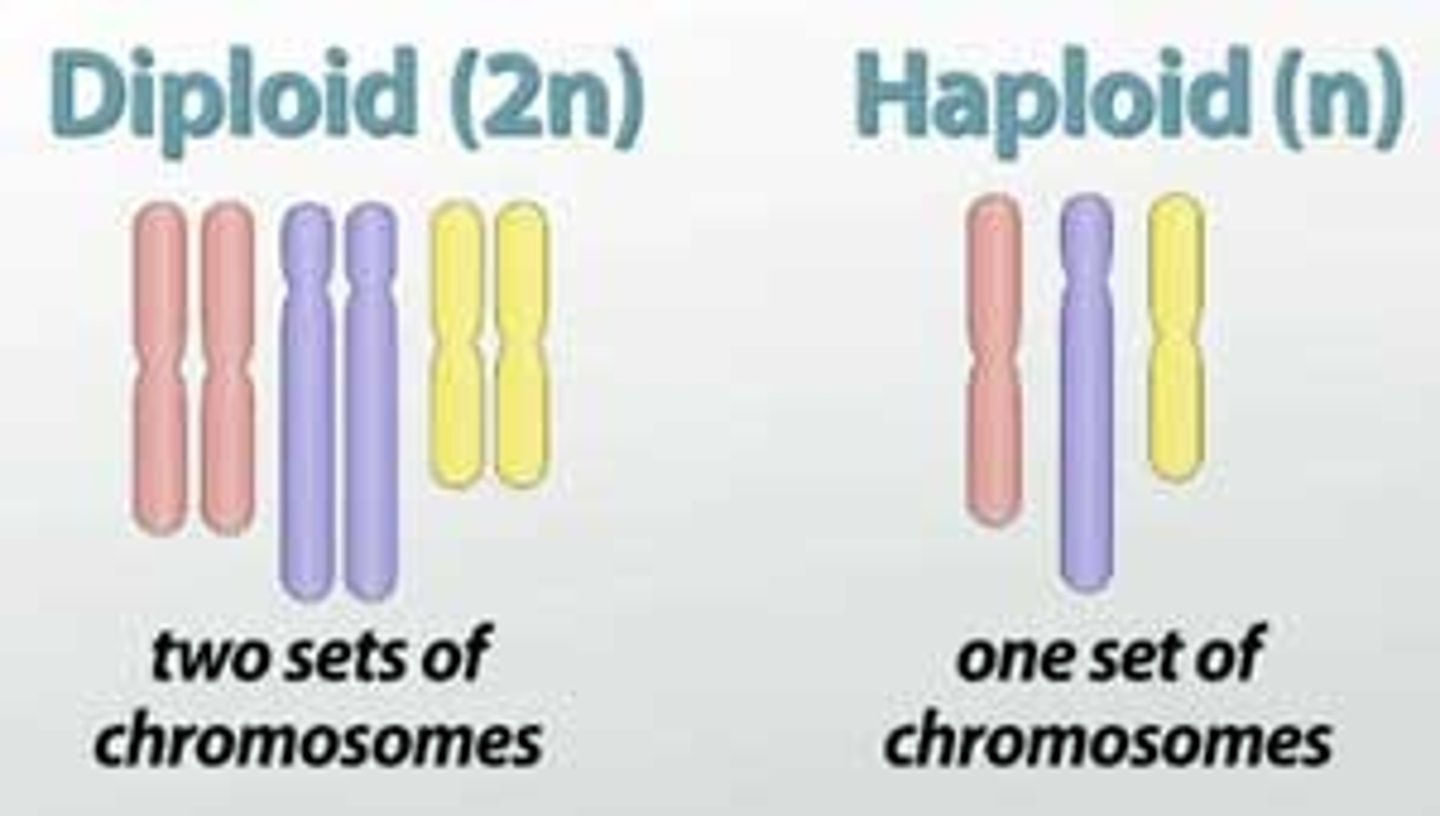
haploid
- The number of chromosomes in gametes (or sex cells) is called the haploid number- it is half the diploid number
- 1 pair
-represented by 'n'
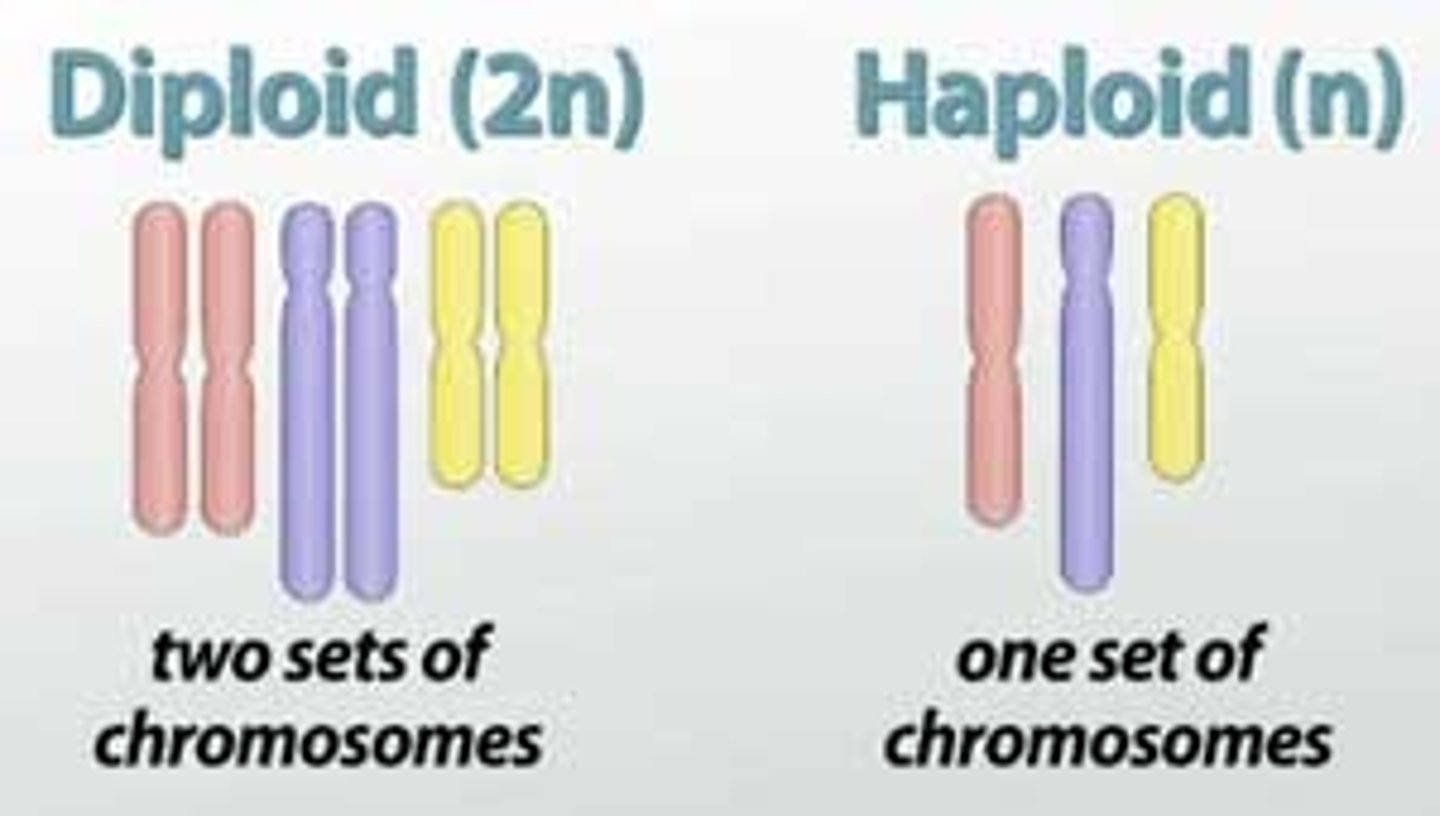
fertilisation
- sex cells have just 23 unpaired or single chromosomes
-When the egg and sperm cells fuse together in the process of fertilisation, the resulting zygote now has a total of 46 chromosomes
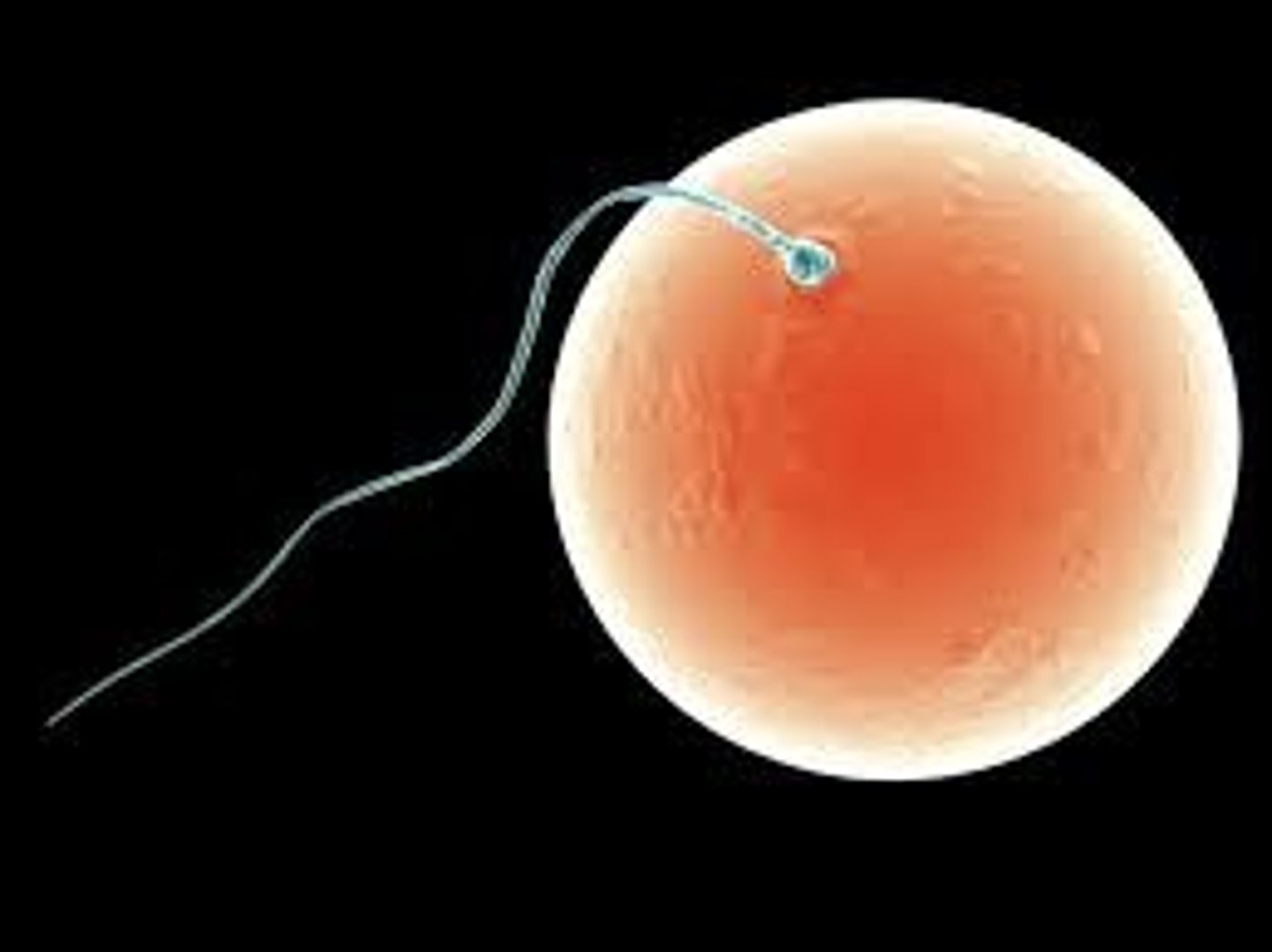
what are the two types of cell division
mitosis and meiosis
- they divide to produce new cells
mitosis
body cells which produce new cells for growth, repair, and asexual reproduction
- The new cells produced are identical to the parent cell. They are called daughter cells and have the same number of chromosomes as the parent cells
- known and written as '2n'
stages of mitosis (PMAT)
1. prophase- chromosomes condense and the nucleus starts breaking down
2. metaphase- The nucleus breaks down completely, chromosomes line up along the middle of the cell
3. anaphase- duplicated chromosomes separate and are pulled apart from each other
4. telophase- two nuclei form, each with its own set of identical DNA
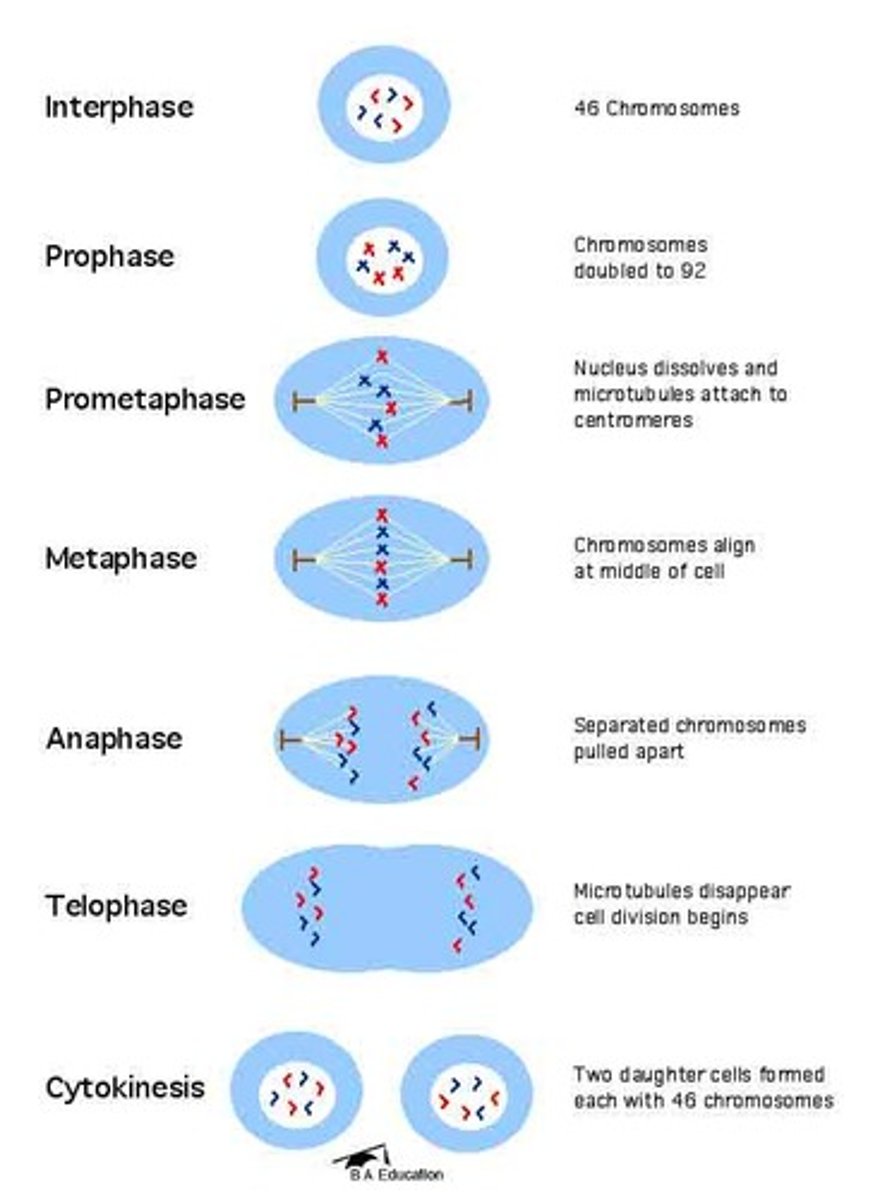
meiosis
- used for sexual reproduction
-produces the gametes such as egg and sperm
- the number of chromosomes is halved (haploid number 'n')
- the cell goes through 2 successive divisons
- a gamete is produced with half as many chromosomes to prevent the doubling of chromosomes at fertilisation
- the formation of gametes takes place in the testies which produce sperm and in the ovary which produced eggs
-PMAT x2
what are the rungs of the ladder made out of
paired molecules called nitrogenous bases
base pairing
adenine + thymine and cytosine + guanine
these bases are made from hydrogen and need equal amounts of AT, CG
what is a nucleotide made from
phosphate, sugar, and a base
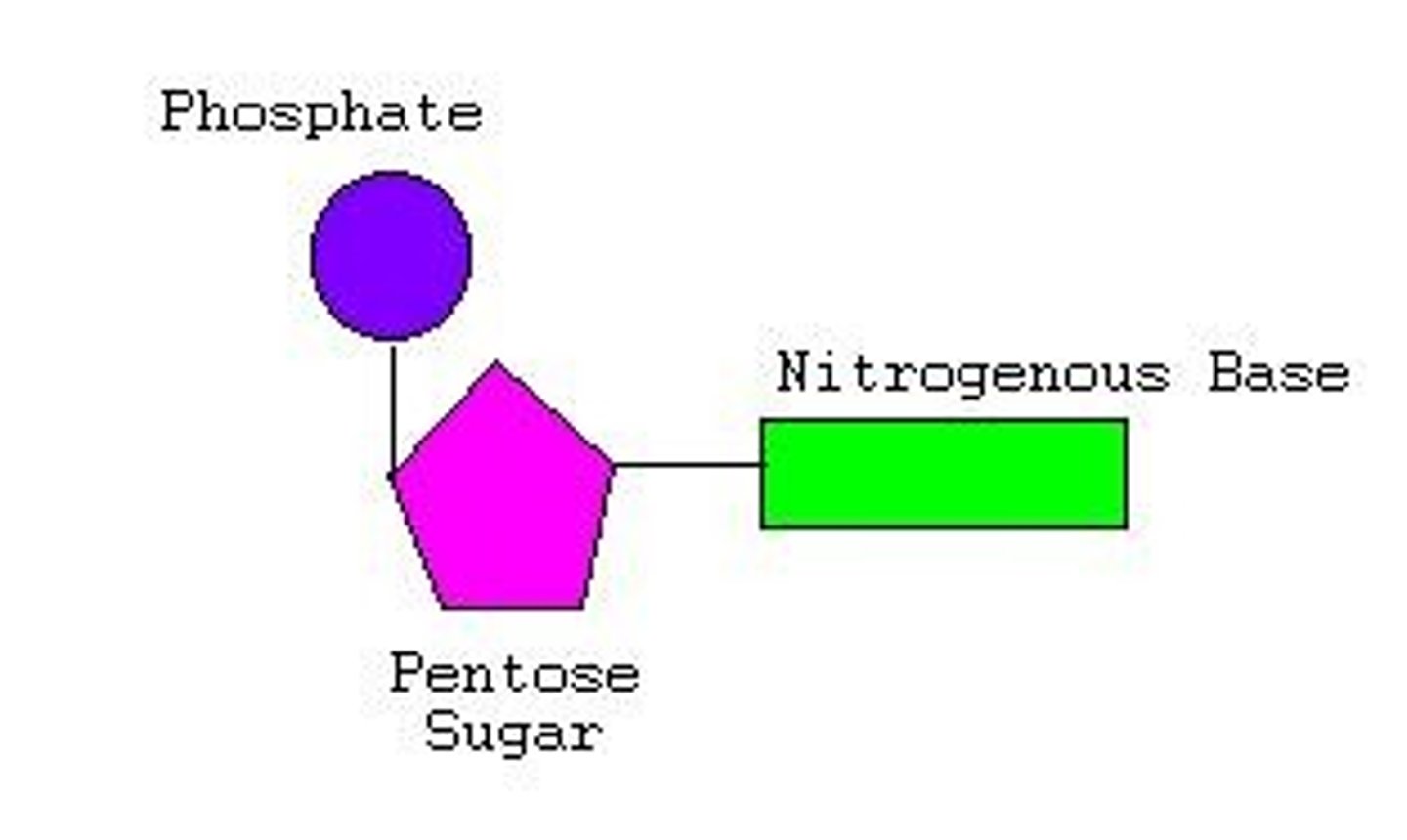
cytokinesis
the physical process of cell division, which divides the cytoplasm of a parental cell into two daughter cells. It occurs concurrently with two types of nuclear division called mitosis and meiosis, which occur in animal cells.
what is a karyotype
a picture of all of our chromosomes
chromosomes are matched in pairs and arranged in size order
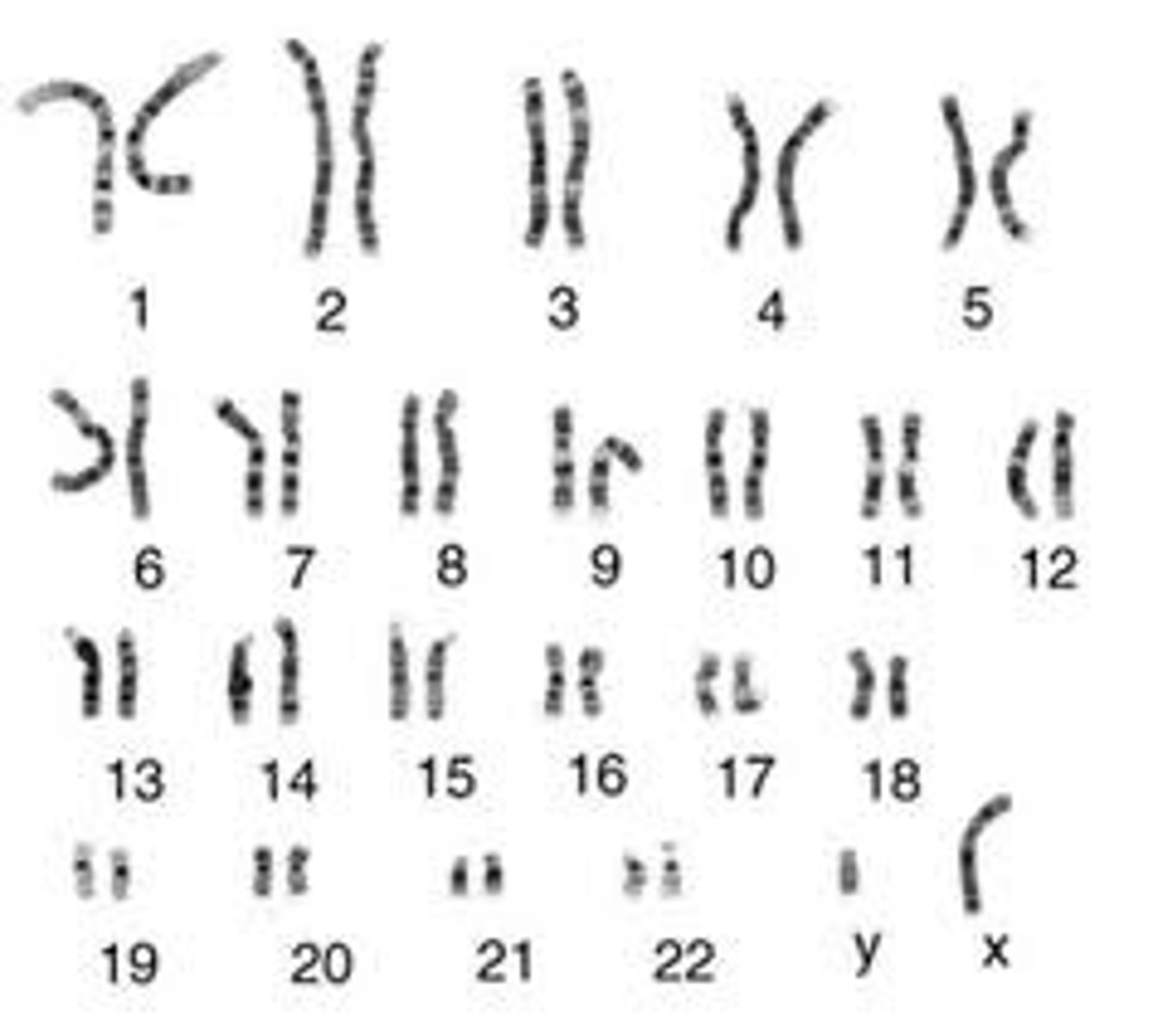
heredity
the passing of genes from one generation to the next. you inherit your parents' genes
Allels
different forms of a gene
- we use a letter to represent this gene
dominant trait
- the trait that always shows, even if the individual only has one copy of it (one allele for it)
- A capital letter is given to the allele of the dominant trait
- written as a symbol: e.g Bb
recessive trait
- a trait that only shows if the individual has two copies of that allele
- A lowercase letter is given to the allele of the recessive trait
e.g bb
genotype
the genetic makeup of the individual
e.g bb
phenotype
the actual appearance of the trait (e.g blue eye colour)
homozygous
-if you have two alleles the same, you are described as homozygous (pure breeding)
- has identical alleles
- e.g TT or tt
heterozygous
- if you have two different alleles, you are described as heterozygous (hybrid) for that trait
-has dissimilar alleles
-e.g Tt
punnett squares
- a special diagram that helps us predict the outcome of a genetic cross
-gives us the chance or probability of offspring inheriting a particular trait
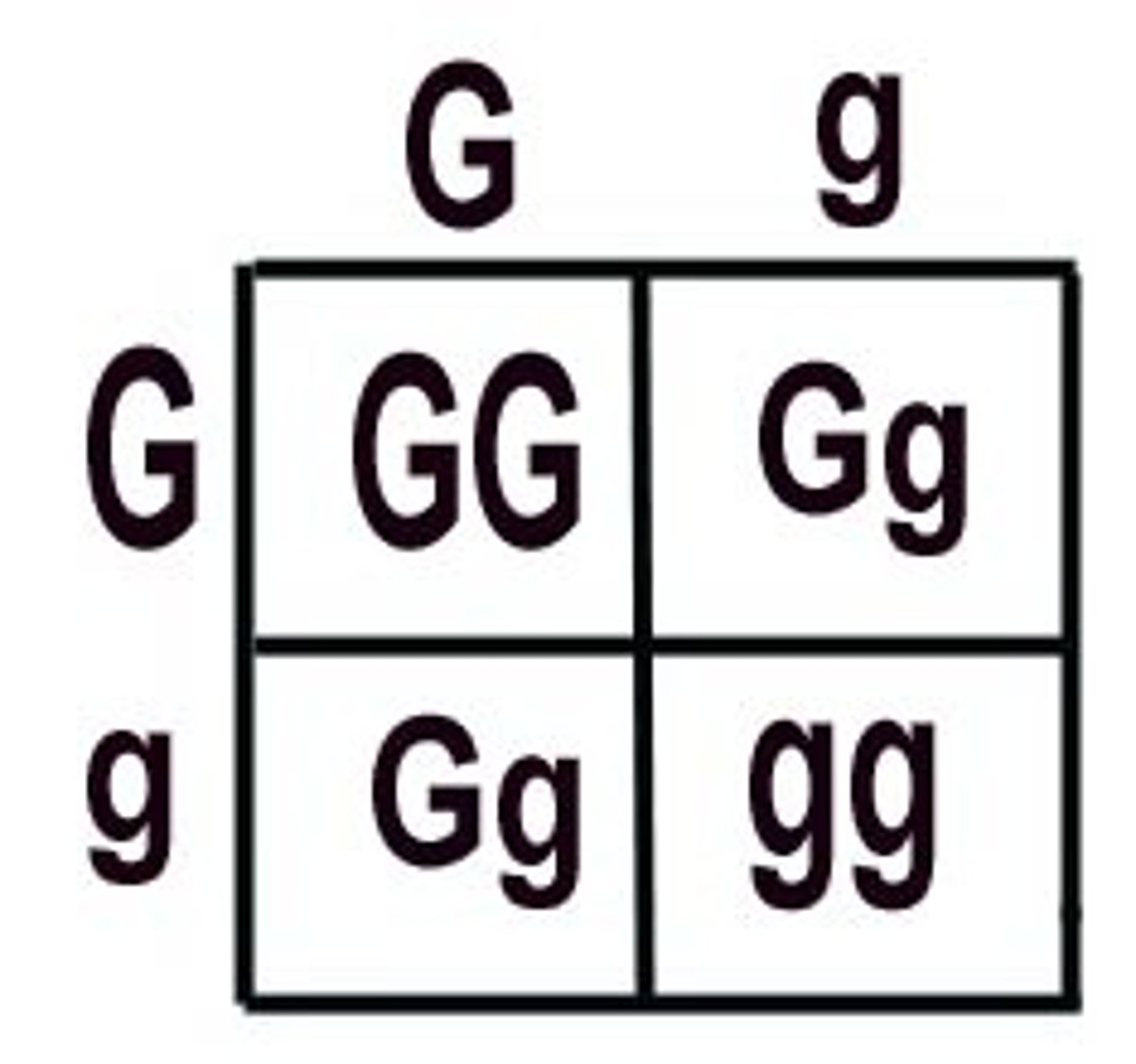
offspring
a person's child or children.
who was gregor mendel
-Known as the father of genetics for the study of the inheritance of traits in pea plants
-he was the first person to predict how traits are transferred from one generation to the next
mutations
-changes in the genetic material of cells
-Can be beneficial or harmful
chromosomes mutations
duplication or deletion of a whole or part of a chromosome.
point mutations
changes to small sections of the DNA sequence such as a base
how do mutations occur
- can happen by pure chance (spontaneous mutation)
- caused by over exposure to UV radiation of X-rays (induced mutation)
mutagen
any factor that causes mutations in cells
aquired traits
a feature that is gained during a persons life time
e.g: skills, scars, tattoos
natural traits
genetic traits that are inherited from parents
e.g: skin colour, eye colour
adaption
-a specific feature or characteristic that improves on the organism's chance of survival in its environment
-e.g, giraffes have long necks and legs to reach their food, tree leaves
- Better adapted organisms have a greater chance of reproducing and passing their genes to the next generation
types of adaptions
structural: e.g camels have long eyelashes to keep out sand
behavioural: e.g penguins huddle together to keep warm
physiological: e.g the dessert hopping mouse produces concentrated urine to prevent too much water loss from it's body
evolution
The process of change in organisms over time. It involves the study of the inherited characteristics within a group of organisms
e.g, peppered moths evolved due to air pollution during the industrial revolution. Before, pepper moths were covered with cream and black spots. During the industrial revolution, the frequency of dark-coloured moths increased.

genetic trait
A feature that can be passed down by genes to the next generation
natural selection
the animals (or plants) best suited to their environment are most likely to survive and reproduce, passing on the characteristics which helped them survive to their offspring.Gradually, the species changes over time
selection pressure
A challenge that affects an organism's ability to survive and reproduce
Examples of selection pressures include:
-hunting by predators
-access to resources, such as food, shelter, territory and mates
-environmental factors, such as temperature and weather conditions
-vulnerability to diseases
-human activities, such as hunting and pollution
variation
- A difference in traits between individuals of the same species
-Variations in genetic traits arise because of mutations. Some traits provide an advantage for survival or reproduction.
species
a group of similar individuals that can bread to produce fertile offsprings, some organisms cannot produce fertile offsprings, as they are not the same species, e.g, liger= male lion + female tiger
speciation and how it occurs
- Formation of new species
- the process by which new species arise, it occurs when populations become reproductively isolated and diverge, leading to the formation of distinct species through mechanisms like geographic isolation or the development of different ecological places
factors that can split a population into geographically isolated groups:
quick acting: such as habitat fragmentation owing to clearing or construction.
slow acting: such as the change of a river course.
even slower geological processes: such as the uplift of mountains or rising of sea levels.
the process of speciation occurs in three basic steps:
1) isolation
- this can occur due to geographic isolation (oceans, rivers, mountain ranges) or climactic isolation (rainfall, temperature, salinity, ocean currents and sunlight)
- the formation of a new species must require isolation. This means that different groups of the population are prevented in some ways from interbreeding.
-Isolation prevents gene flow throughout the population, stopping any differences in one population from reaching the other population
the process of speciation occurs in three basic steps: selection
once groups are isolated by barriers, natural selection affects the genotype of each group. this can lead to changes that prevents the groups breeding with each other even if they come back together again at some time in the future
the process of speciation occurs in three basic steps: distant species
as organisms are unable to breed with one another to produce fertile offspring, they form distant speices
evidence for evolution
-fossil record: shows change over time
-comparative anatomy: comparing body structures
comparative embryology: comparing embryos of different species
chemical similarities: similarities in DNA for different species
geographic distribution: biogeography is the study of the geographical distribution of fossils and living speicies
fossil record
-layers of rock contain fossils
- new layers cover older ones: creates a record over time, fossils show how a series of organisms have lived on earth over a long period of time
- the fossil record provides evidence that living things have evolved. fossils show the history of life on earth and how different groups of organisms have changed over time
types of fossils
mould: a hollow impression of a living thing in rock after it dies
cast: a solid mineral deposit that filled a mould, leaving a copy of the living thing
imprint: an impression in rock made by a living thing during its life actives
amber fossils: parts of plants, insects or small animals that have been trapped in amber
petrification: plant or animal tissue replaced by minerals
whole animal: an entire plant or animal encased and preserved in ice, sap, or another material
comparative anatomy
animals with different structures on the surface but when when you look under the skin it tells an evolutionary story of common ancestors
bones: the same bones under the skin, limbs that preform different functions are built from the same bones
homologous structures
- structures that come from the same origin
forelimbs of humans, cats, whales and bats:
- same structure on the inside
- different functions on the outside
- evidence of common ancestor
relative dating
- used to arrange geological events, and the rocks they leave behind in a sequence. Relative dating does not provide actual numerical dates for the rocks
- fossils are important for working ut the relative ages of sedimentary rocks
absolute dating
geologists often need to know the age of material that they find. they use absolute dating methods, such as carbon-14 dating, to determine the actual ages of rocks and fossils
analogous structures
- look similar on the outside
-same function
-different structures and development on the inside
-different origin
-no evolutionary relationship
e.g: dolphins: bone skeleton, go to surface to breath, nurse young compared to sharks
vestigial structures
remnants that were important in a organisms ancestors, but are no longer used in the same way
e.g wisdom teeth
comparative embryology
-development of embryo tells an evolutionary story
- similar structures during development
comparing DNA
Comparing DNA and protein structure: everyone uses the same genetic code, only the order of the information is different
DNA hybridisation
a technique used to compare DNA sequences to determine how closely related different species are
geographic distribution
the earth is composed of a mosaic of thin rigid plates that move horizontally with respect to one another. the plates interact with each other along their plate boundaries. Plate boundaries associated with tectonic activity (mountain building, earthquakes, active volcanoes)
evidence for continental drift
- continental shape
-similar geology
-fossil evidence (animals and plants)
-volcano and earthquake zone
Lamarck
- a french scientist who developed an opposing theory of evolution
- Lamarck said organisms acquired traits by using their bodies in new ways.
-These new characteristics were passed to offspring
charles Darwin
- a British scientist who came up with the theory of evolution
- on his voyage, his breakthrough in his ideas came in the Galapagos Islands in South America. Darwin noticed that each island had its own type of finch which were closely related but differed in important ways
charles theory
1) variation exists between members of a species
2) some of these variations or characteristics will be better suited to the environment than others
#) there is a 'struggle for survival'. not all individuals will survive and reproduce. only these who inherit the most fit characteristics are likely to survive and reproduce
4) these characteristics will be passed on to their offspring and increase in numbers over the next generation